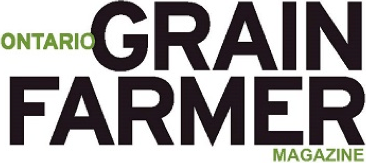A fundamentally new approach to determining soil N mineralization potential through thermal cracking analysis
Principal Investigator: Adam Gillespie
Research Institution: University of Guelph
Timeline: April 2021 – March 2025
Objectives:
- To develop and validate a thermal cracking method as a fundamentally new test for soil N availability.
- Instrumentation development.
- Lab N mineralization study to validate link between thermal and biological N availability.
- Determine link between thermal N availability and crop response for corn and wheat.
- Develop a process-based model to predict N availability to crops using thermal cracking as a predictor.
Impacts:
- Development of potentially mineralizable N predictions for the growing season means farmers may be able to estimate N availability using other real time data such as rain or heat.
- Farmers can reduce input costs by knowing their soil N stocks and potential availability.
- Potential reduction in excess N use means reductions in nitrate leaching, loss to surface water, ammonia volatilization and greenhouse gas production.
- This data can be used to provide support for implementation of 4R nutrient stewardship for N.
Scientific Summary:
Sustainable intensification means growing more food using existing resources while simultaneously reducing food production’s impact on the environment. While incredibly beneficial to food security, nitrogen (N) fertilizer use has had a major environmental trade off in terms of nutrient overloading of surface waters and the production of nitrous oxide, a potent green-house gas. Knowing how much fertilizer to apply is important to minimize environmental losses as well as input costs. However, there are issues with determining the soil available N so that fertilizer application can be fine-tuned to provide only the N needed for optimal crop production. The current soil nitrate N test is a chemical extraction which only measures the available N at the time the test is taken (at planting, or at V6 “pre-sidedress”). This test does not directly predict how soils can release N over the growing season, and its interpretation is confounded by leaching and denitrification losses that may or may not take place prior to or after sampling, as well as by previously applied N from fertilizer and manure.
We propose an N test that is fundamentally different from current soil testing approaches. Current N tests are based on chemically extracting available N, whereas our solution uses a physical and biochemical test based on thermal cracking. The advantage is that instead of providing only an assessment of available N at planting, this method could estimate N availability to a crop throughout the whole growing season.
External Funding Partners:
The project was funded in part by the Ontario Agri-Food Innovation Alliance, a collaboration between the government of Ontario and the University of Guelph.

